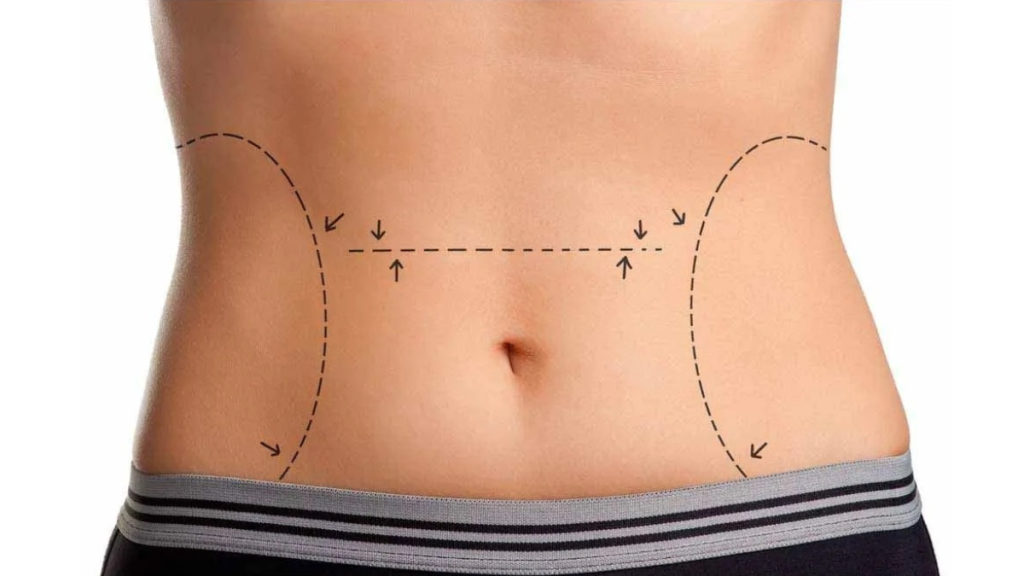Liposculpture is one of the most sought-after cosmetic procedures in Colombia. Far from being a simple fat removal technique, it’s a way to sculpt the body with precision—enhancing contours and harmonizing proportions. The country is home to highly trained professionals who have developed advanced surgical skills and an artistic approach to achieve natural, long-lasting, and safe results. Want to be part of it? Learn more here.
What Is Liposculpture and How Is It Different from Liposuction?
Although the terms are sometimes used interchangeably, liposculpture and liposuction have clear differences. Traditional liposuction focuses on removing localized fat deposits in areas such as the abdomen, thighs, flanks, or arms. Liposculpture, on the other hand, combines fat removal with strategic body contouring. The goal is not just to reduce volume, but to enhance the silhouette by defining muscle lines and improving overall proportion.
In practice, the extracted fat can be purified and re-injected into areas needing volume, such as the buttocks, in a process known as fat transfer. This dual approach—removing where there’s excess and adding where it’s needed—makes liposculpture a comprehensive procedure, ideal for a sophisticated and personalized aesthetic enhancement.
Why Has Colombia Become a Global Reference in Liposculpture?
In recent years, hundreds of patients from Latin America, North America, and Europe have traveled to Colombia, drawn by the high quality of its procedures. This trend isn’t just about competitive pricing—it’s due to the prestige of its clinics, the academic level of its professionals, and a high rate of patient satisfaction.
Colombian surgeons receive specialized training in advanced body contouring and have accumulated thousands of hours of practical experience. Many have studied abroad or participated in international congresses, keeping them up to date with the latest techniques and trends.
Across the country—especially in cities like Bogotá, Medellín, and Cali—there are specialized aesthetic surgery centers that meet strict sanitary standards and offer modern clinical environments. Access to state-of-the-art technology and skilled personnel ensures safe procedures and professional care at every stage.
Technical Precision Behind a Well-Executed Liposculpture
Liposculpture requires more than medical knowledge—it demands refined technical skills and a highly developed aesthetic vision. The process begins with a comprehensive evaluation of the patient. It’s not just about measuring body fat, but understanding the body’s overall shape, mass distribution, and bone structure.
During surgery, the surgeon makes small incisions to insert a fine cannula connected to a suction device. The fat is removed in a controlled manner to avoid irregularities in the skin. Modern techniques focus on the ability to define specific anatomical features (such as the abdominal line, waist, or pectorals) without creating an artificial appearance.
In Colombia, expert liposculpture surgeons apply advanced techniques such as laser-assisted liposuction, ultrasound, or radiofrequency to operate with greater precision and less tissue trauma. The goal is to achieve faster recovery and reduce postoperative pain.
High-Definition Liposculpture: Taking Body Contouring a Step Further
Among the most innovative liposculpture techniques is high-definition liposculpture, which aims to highlight the patient’s natural muscles in greater detail. It’s especially popular among individuals with solid muscle tone whose subcutaneous fat obscures their muscle definition.
It’s worth noting that this procedure isn’t exclusive to men. Active women with healthy habits also choose it to define their abdomen, highlight the gluteal curve, or sculpt their arms. What’s essential is having a controlled fat percentage and good skin elasticity to achieve a clean and balanced result.
Experienced high-definition liposculpture surgeons use high-precision technology to contour key muscle areas without creating harsh or unnatural marks. The result is not exaggerated, but rather an athletic figure that retains feminine or masculine features, depending on the case.
Recovery: What to Expect After Liposculpture
A well-performed liposculpture typically leads to a smooth, gradual recovery without major trauma. In the first few days, it’s normal to experience swelling, bruising, and tenderness in the treated areas. However, thanks to less invasive techniques and advanced pain management, most patients can return to light activities within a week.
Wearing a post-surgical compression garment for at least four weeks is recommended, as it helps control swelling, supports skin retraction, and enhances final results. Recovery is often complemented by lymphatic drainage, specialized massages, and ultrasound therapy to reduce fibrosis and speed up the healing process.
Final results become visible between two and six months after surgery, once swelling has subsided and tissues have adjusted to their new shape. The key is to follow medical recommendations closely and maintain healthy habits.
Emotional Assessment: The Impact Beyond the Body
While the focus is physical, the emotional transformation after liposculpture is profound. It’s not just about looking different in the mirror. Most patients report a shift in how they relate to themselves and their surroundings.
Increased confidence, improved posture, and motivation to adopt a more active lifestyle are common outcomes. When done responsibly, body contouring isn’t a superficial whim—it’s part of an empowering journey that boosts self-esteem and promotes long-term self-care.
What to Look for When Choosing a Liposculpture Specialist
Choosing the right professional has a direct impact on the safety, experience, and results of the procedure. A good surgeon does more than operate—they evaluate, inform, and support the patient before, during, and after the process.
It is highly recommended to choose professionals certified by the Colombian Society of Plastic Surgery, with proven experience in body procedures. Reviewing real patient portfolios, reading reviews, and confirming that the clinic is authorized by the Ministry of Health are also important steps.




